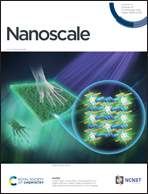Unveiling the reaction mechanism of an Sb2S3–Co9S8/NC anode for high-performance lithium-ion batteries†
Abstract
Metal sulfides are promising lithium-ion battery anode materials with high specific capacities, but there has been little in-depth discussion on the reaction mechanism of metal sulfides. In this study, a robust bimetallic sulfide heterogeneous material (Sb2S3–Co9S8/NC) based on a metal–organic framework was designed. The combination of in situ X-ray diffraction and ex situ transmission electron microscopy revealed the phase evolution behavior during the first cycle. During the lithiation process, Sb2S3 undergoes lithium insertion, conversion and alloying reactions to form crystalline Li2S, Li3Sb and metallic Sb. Co9S8 undergoes lithium insertion and transformation to form metallic Co and Li2S. Lithium ions are extracted from the nanocrystalline phase and transformed into the original Sb2S3 and Co9S8 phases. The Sb2S3–Co9S8/NC anode exhibits excellent cycle stability (616 mA h g−1 at 2 A g−1 after 900 cycles) and fast lithium ion transfer kinetics. These results demonstrate the lithiation/delithiation mechanism of the Sb2S3-based anode and provide a new path for the development of high-performance LIB anodes based on bimetallic sulfides.



 Please wait while we load your content...
Please wait while we load your content...